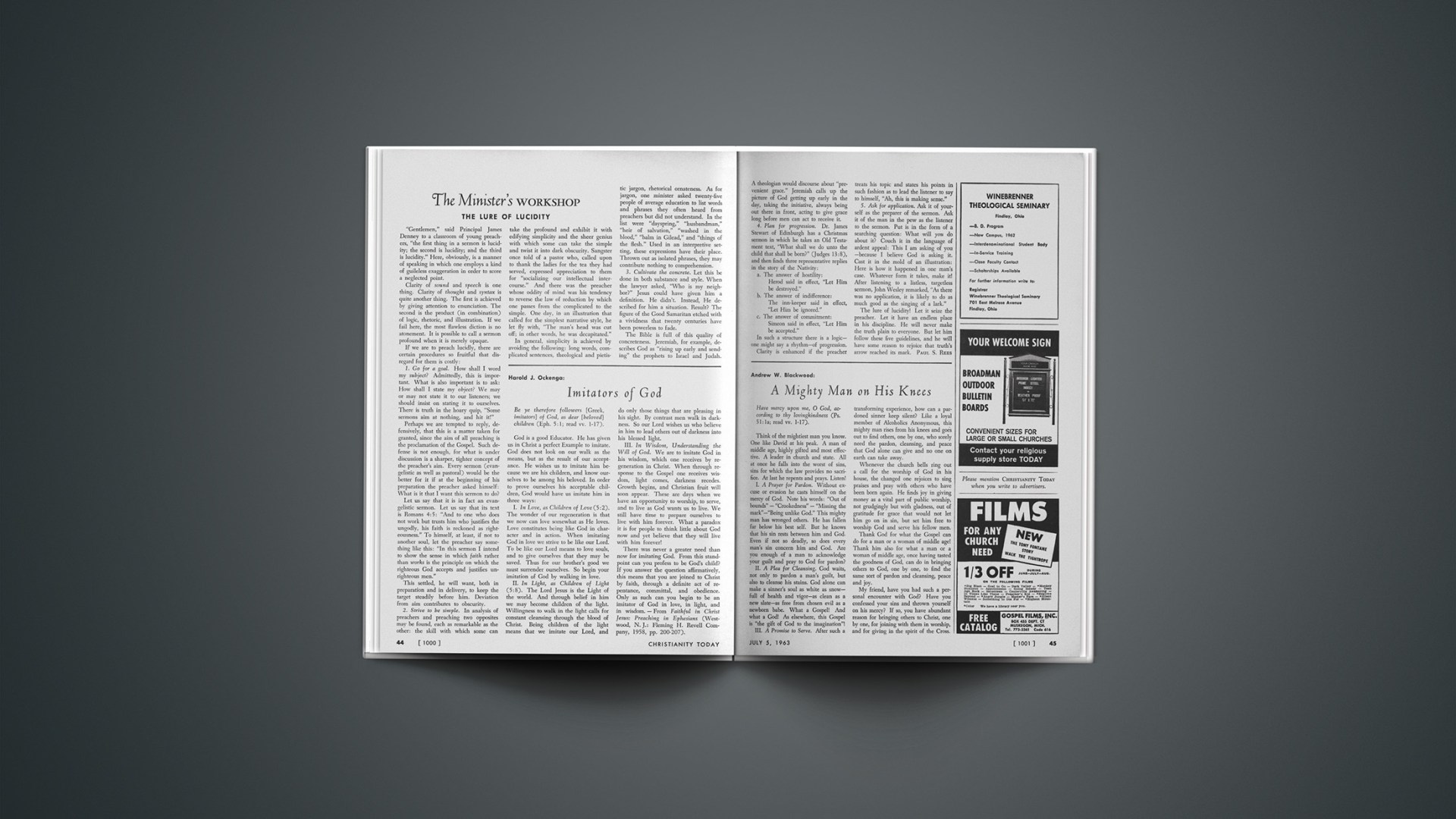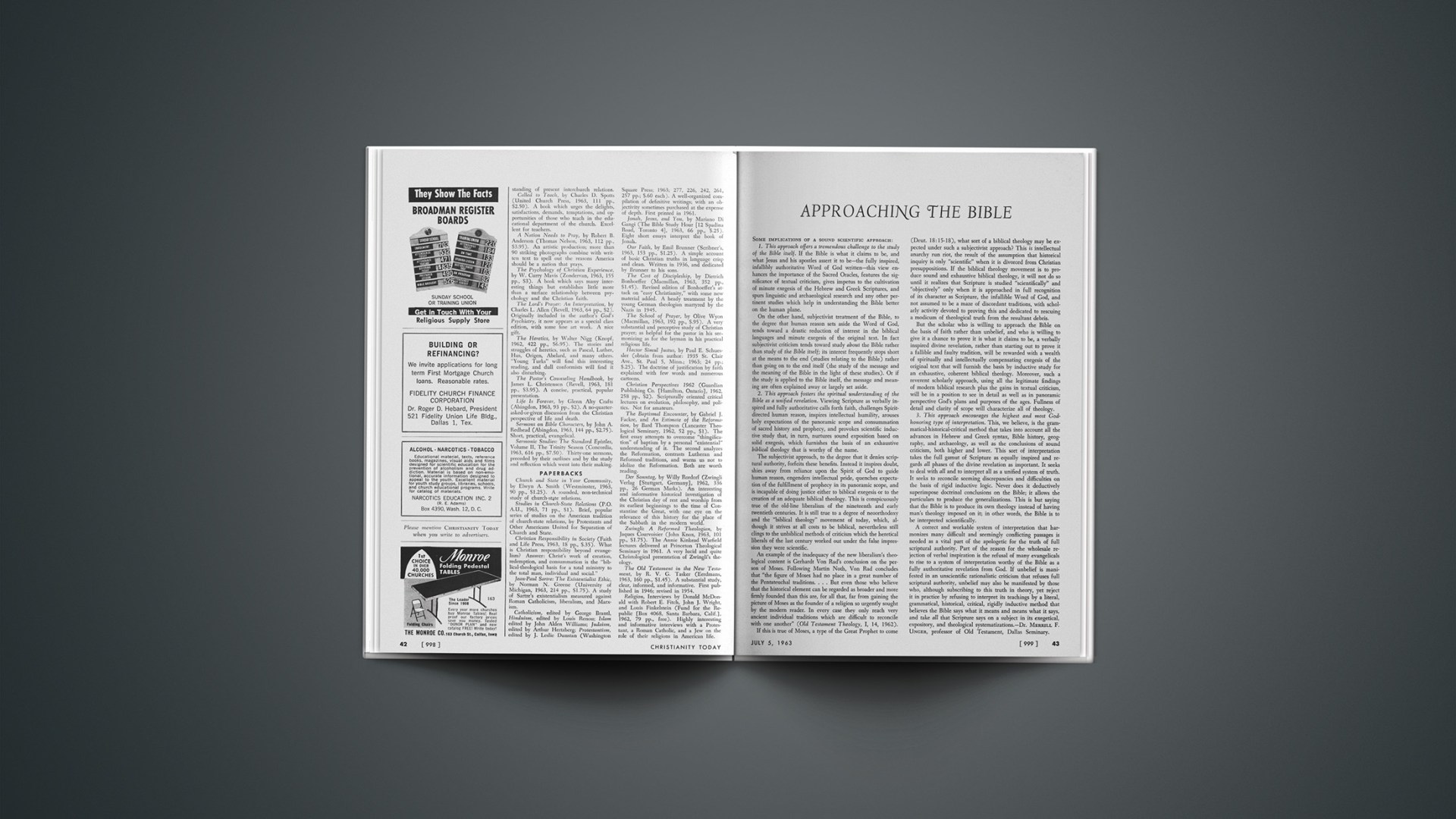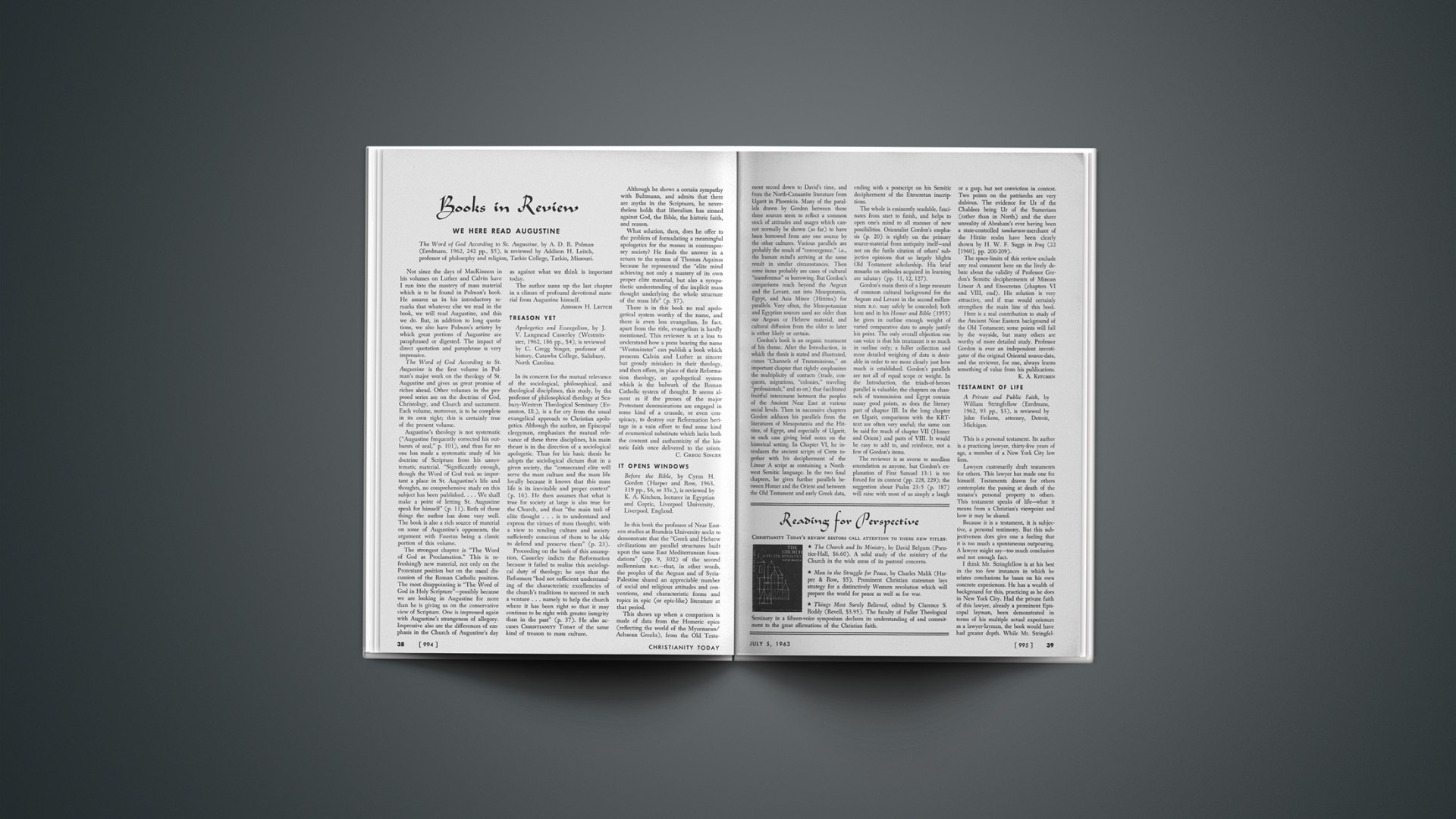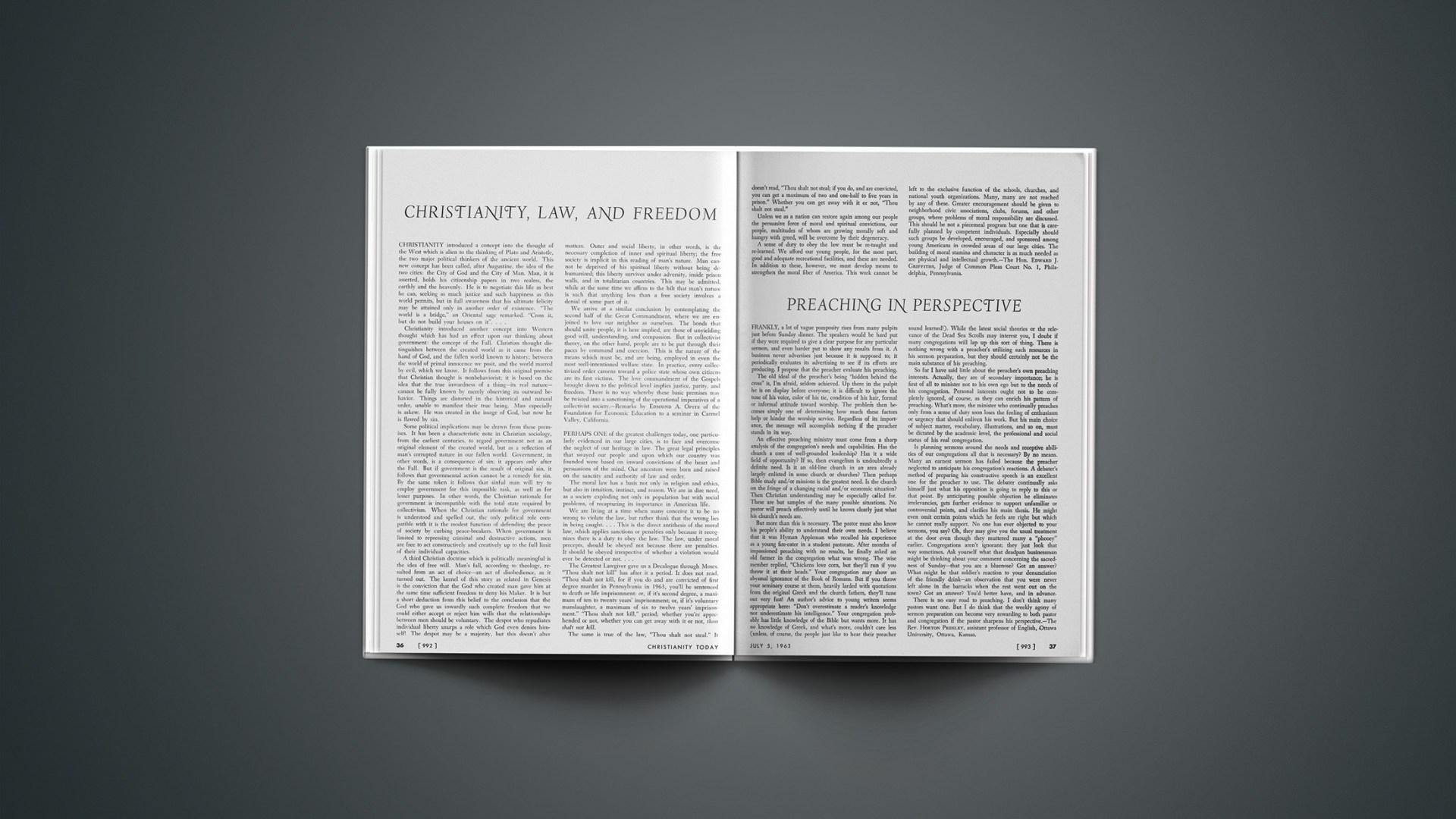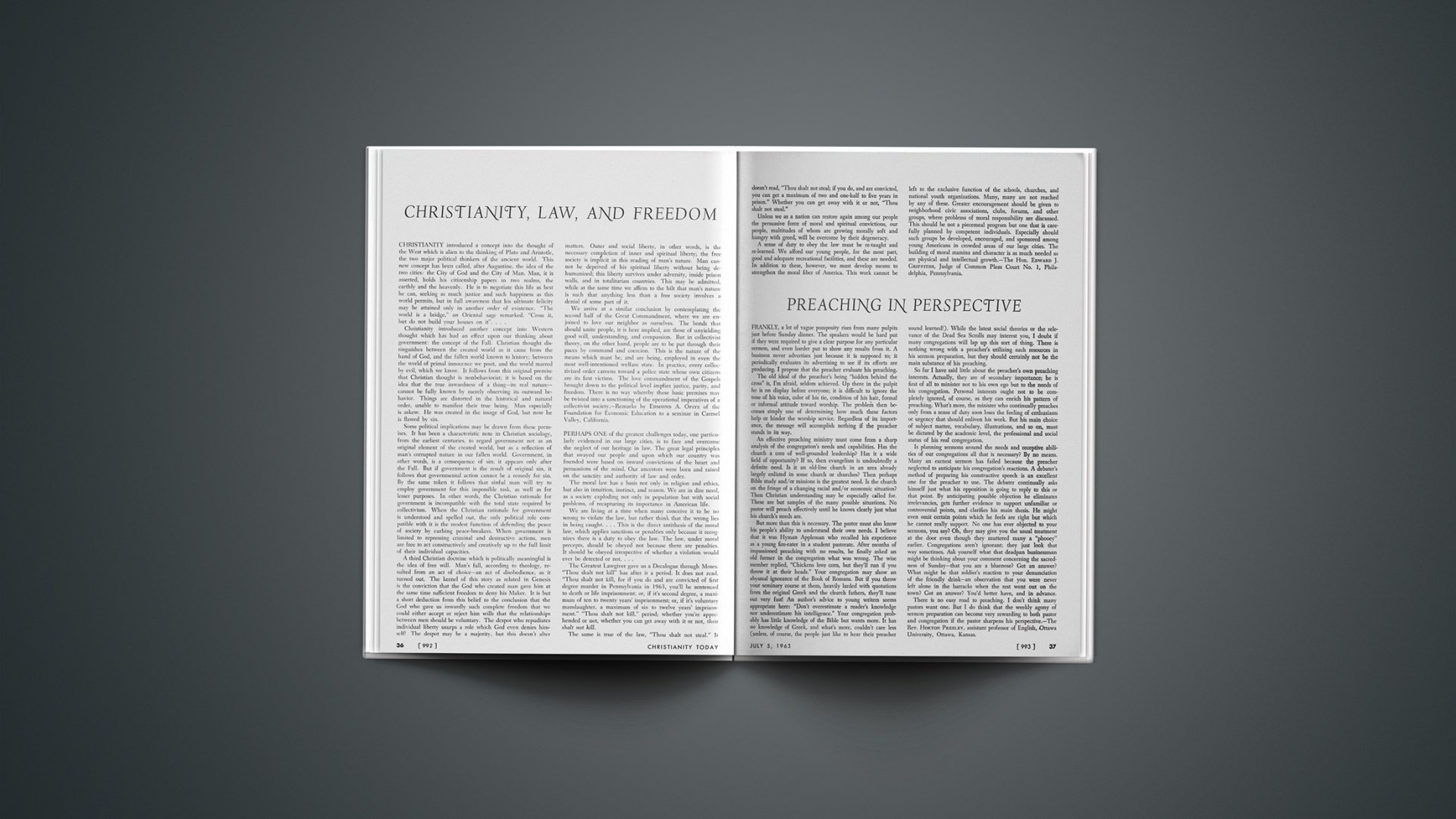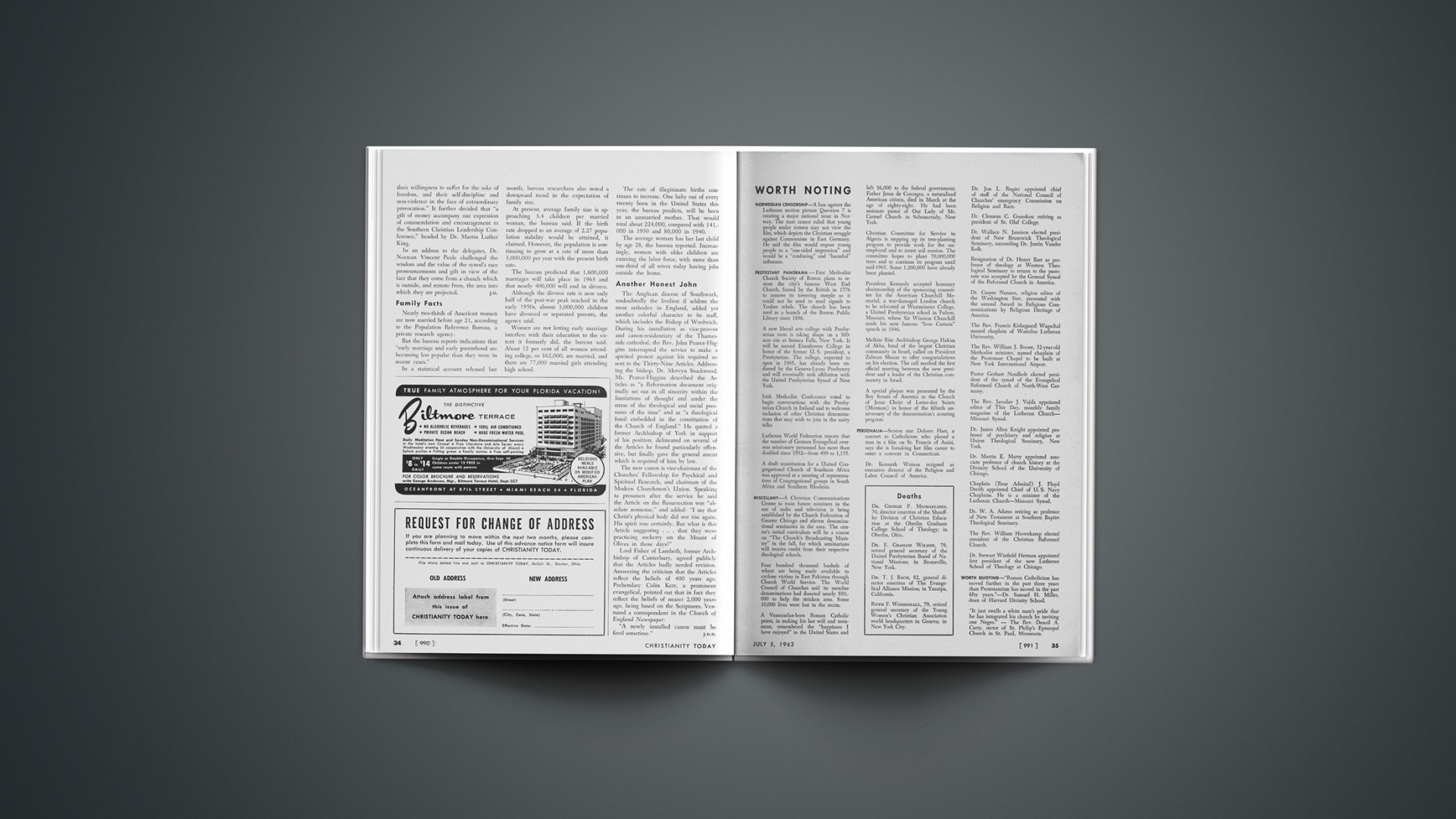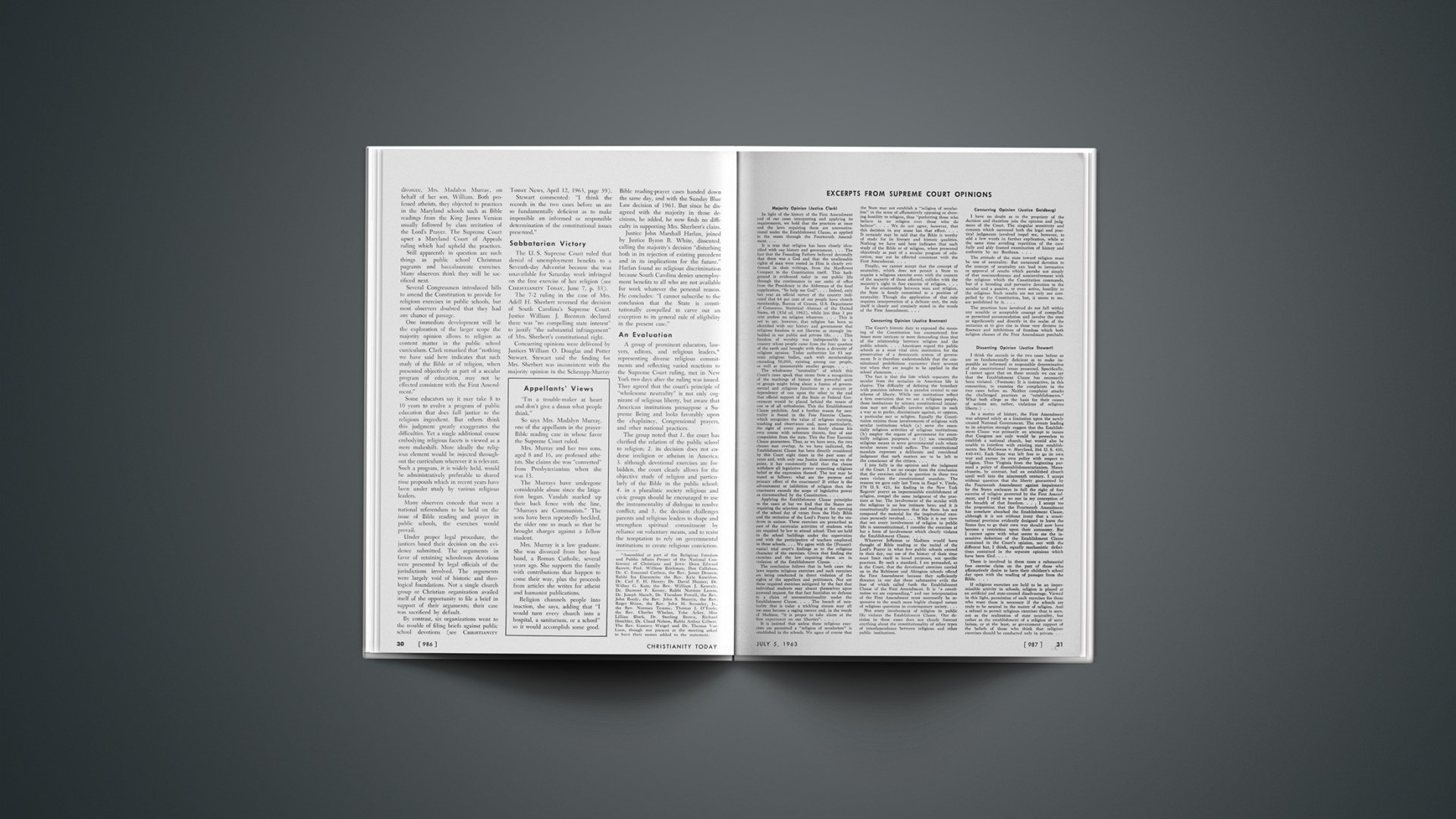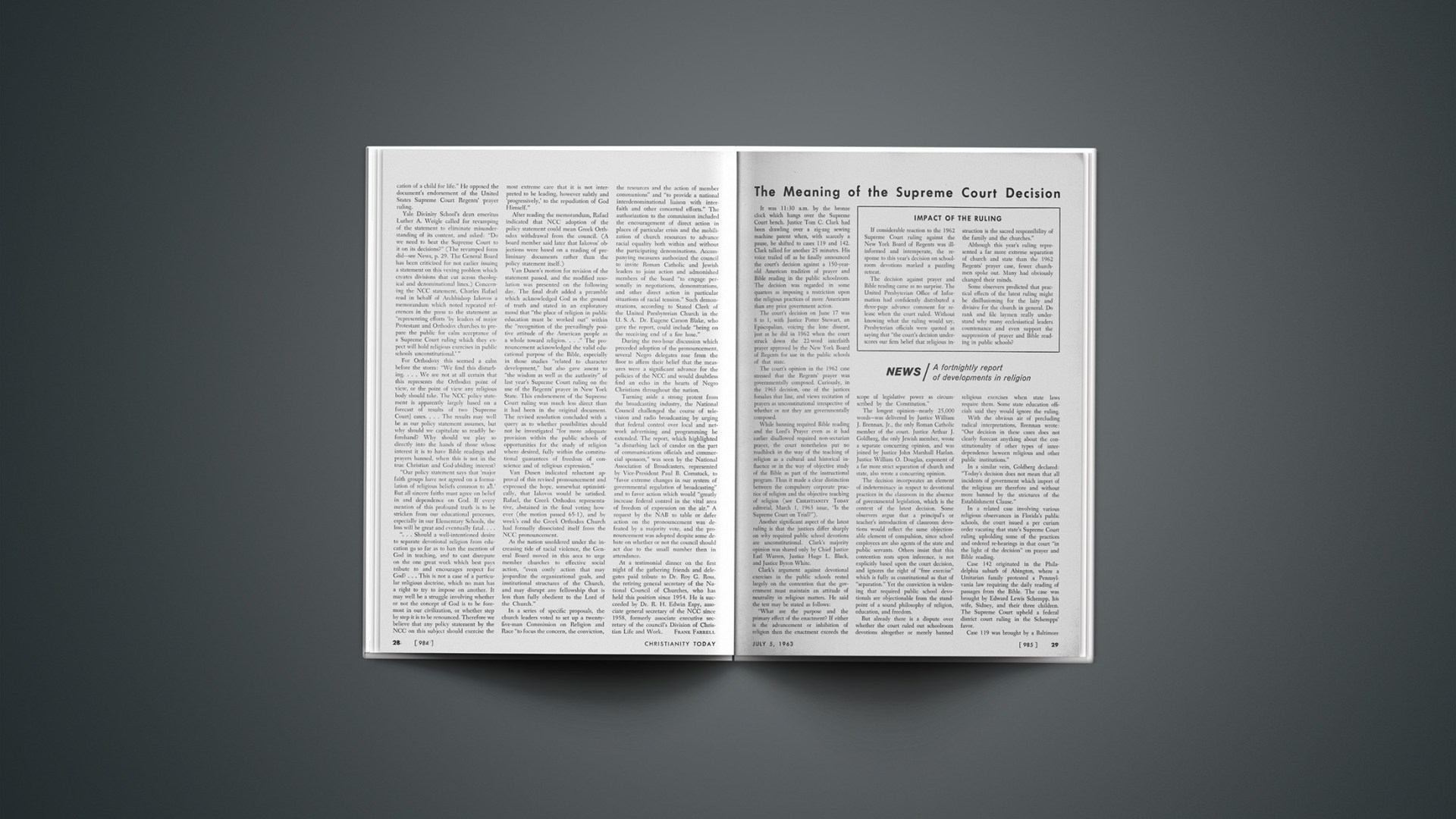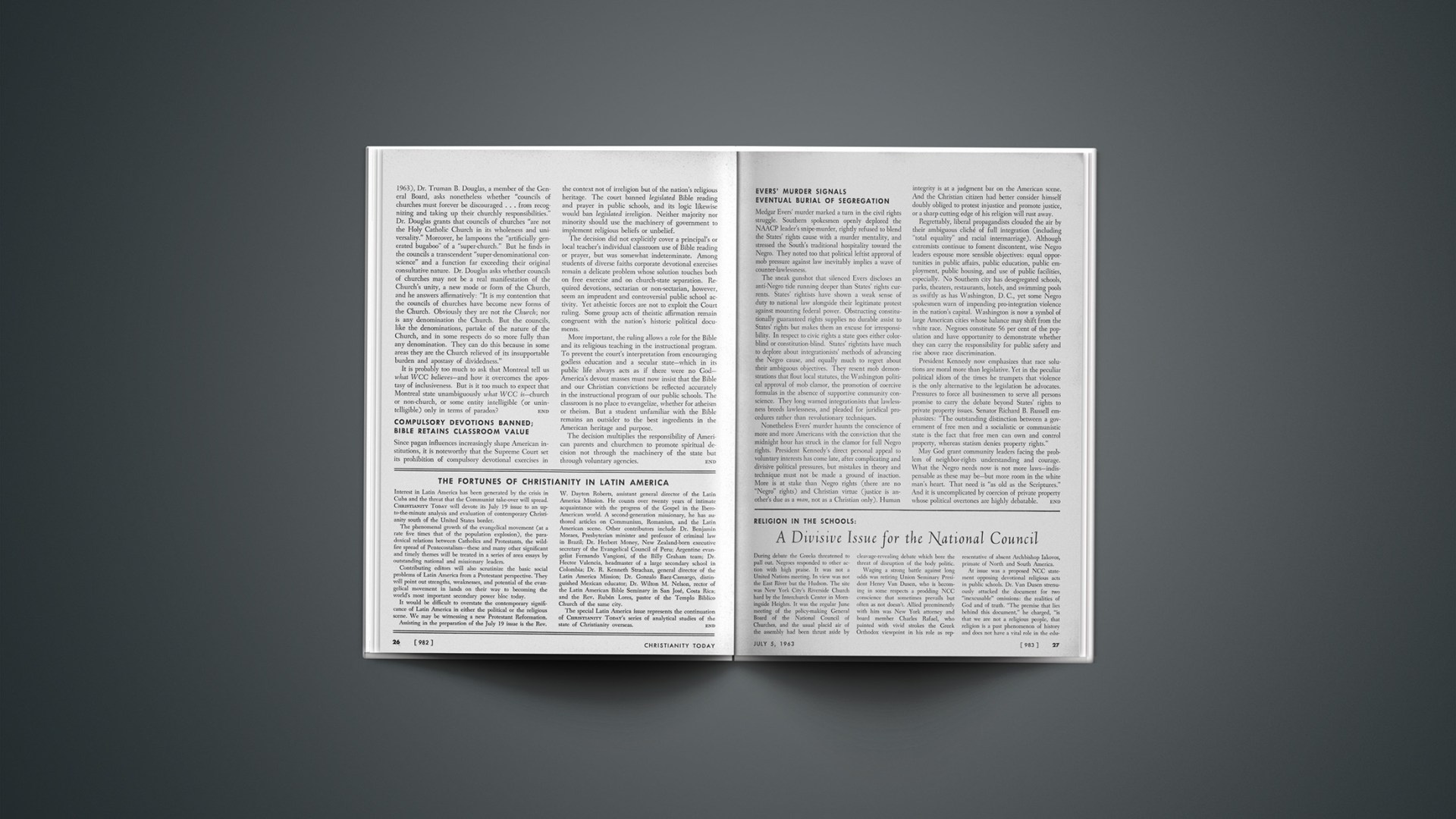The Lure Of Lucidity
“Gentlemen,” said Principal James Denney to a classroom of young preachers, “the first thing in a sermon is lucidity; the second is lucidity; and the third is lucidity.” Here, obviously, is a manner of speaking in which one employs a kind of guileless exaggeration in order to score a neglected point.
Clarity of sound and speech is one thing. Clarity of thought and syntax is quite another thing. The first is achieved by giving attention to enunciation. The second is the product (in combination) of logic, rhetoric, and illustration. If we fail here, the most flawless diction is no atonement. It is possible to call a sermon profound when it is merely opaque.
If we are to preach lucidly, there are certain procedures so fruitful that disregard for them is costly:
1. Go for a goal. How shall I word my subject? Admittedly, this is important. What is also important is to ask: How shall I state my object? We may or may not state it to our listeners; we should insist on stating it to ourselves. There is truth in the hoary quip, “Some sermons aim at nothing, and hit it!”
Perhaps we are tempted to reply, defensively, that this is a matter taken for granted, since the aim of all preaching is the proclamation of the Gospel. Such defense is not enough, for what is under discussion is a sharper, tighter concept of the preacher’s aim. Every sermon (evangelistic as well as pastoral) would be the better for it if at the beginning of his preparation the preacher asked himself: What is it that I want this sermon to do?
Let us say that it is in fact an evangelistic sermon. Let us say that its text is Romans 4:5: “And to one who does not work but trusts him who justifies the ungodly, his faith is reckoned as righteousness.” To himself, at least, if not to another soul, let the preacher say something like this: “In this sermon I intend to show the sense in which faith rather than works is the principle on which the righteous God accepts and justifies unrighteous men.”
This settled, he will want, both in preparation and in delivery, to keep the target steadily before him. Deviation from aim contributes to obscurity.
2. Strive to be simple. In analysis of preachers and preaching two opposites may be found, each as remarkable as the other: the skill with which some can take the profound and exhibit it with edifying simplicity and the sheer genius with which some can take the simple and twist it into dark obscurity. Sangster once told of a pastor who, called upon to thank the ladies for the tea they had served, expressed appreciation to them for “socializing our intellectual intercourse.” And there was the preacher whose oddity of mind was his tendency to reverse the law of reduction by which one passes from the complicated to the simple. One day, in an illustration that called for the simplest narrative style, he let fly with, “The man’s head was cut off; in other words, he was decapitated.”
In general, simplicity is achieved by avoiding the following: long words, complicated sentences, theological and pietistic jargon, rhetorical ornateness. As for jargon, one minister asked twenty-five people of average education to list words and phrases they often heard from preachers but did not understand. In the list were “dayspring,” “husbandman,” “heir of salvation,” “washed in the blood,” “balm in Gilead,” and “things of the flesh.” Used in an interpretive setting, these expressions have their place. Thrown out as isolated phrases, they may contribute nothing to comprehension.
3. Cultivate the concrete. Let this be done in both substance and style. When the lawyer asked, “Who is my neighbor?” Jesus could have given him a definition. He didn’t. Instead, He described for him a situation. Result? The figure of the Good Samaritan etched with a vividness that twenty centuries have been powerless to fade.
Be ye therefore followers [Greek, imitators] of God, as dear [beloved] children (Eph. 5:1; read vv. 1–17).
God is a good Educator. He has given us in Christ a perfect Example to imitate. God does not look on our walk as the means, but as the result of our acceptance. He wishes us to imitate him because we are his children, and know ourselves to be among his beloved. In order to prove ourselves his acceptable children, God would have us imitate him in three ways:
I. In Love, as Children of Love (5:2). The wonder of our regeneration is that we now can love somewhat as He loves. Love constitutes being like God in character and in action. When imitating God in love we strive to be like our Lord. To be like our Lord means to love souls, and to give ourselves that they may be saved. Thus for our brother’s good we must surrender ourselves. So begin your imitation of God by walking in love.
II. In Light, as Children of Light (5:8). The Lord Jesus is the Light of the world. And through belief in him we may become children of the light. Willingness to walk in the light calls for constant cleansing through the blood of Christ. Being children of the light means that we imitate our Lord, and do only those things that are pleasing in his sight. By contrast men walk in darkness. So our Lord wishes us who believe in him to lead others out of darkness into his blessed light.
III. In Wisdom, Understanding the Will of God. We are to imitate God in his wisdom, which one receives by re generation in Christ. When through response to the Gospel one receives wisdom, light comes, darkness recedes. Growth begins, and Christian fruit will soon appear. These are days when we have an opportunity to worship, to serve, and to live as God wants us to live. We still have time to prepare ourselves to live with him forever. What a paradox it is for people to think little about God now and yet believe that they will live with him forever!
There was never a greater need than now for imitating God. From this standpoint can you profess to be God’s child? If you answer the question affirmatively, this means that you are joined to Christ by faith, through a definite act of repentance, committal, and obedience. Only as such can you begin to be an imitator of God in love, in light, and in wisdom.—From Faithful in Christ Jesus: Preaching in Ephesians (Westwood, N. J.: Fleming H. Revell Company, 1958, pp. 200–207).
The Bible is full of this quality of concreteness. Jeremiah, for example, de scribes God as “rising up early and sending” the prophets to Israel and Judah. A theologian would discourse about “prevenient grace.” Jeremiah calls up the picture of God getting up early in the day, taking the initiative, always being out there in front, acting to give grace long before men can act to receive it.
4. Plan for progression. Dr. James Stewart of Edinburgh has a Christmas sermon in which he takes an Old Testament text, “What shall we do unto the child that shall be born?” (Judges 13:8), and then finds three representative replies in the story of the Nativity:
a. The answer of hostility:
Herod said in effect, “Let Him be destroyed.”
b. The answer of indifference:
The inn-keeper said in effect, “Let Him be ignored.”
c. The answer of commitment:
Simeon said in effect, “Let Him be accepted.”
In such a structure there is a logic-one might say a rhythm—of progression.
Clarity is enhanced if the preacher treats his topic and states his points in such fashion as to lead the listener to say to himself, “Ah, this is making sense.”
5. Ask for application. Ask it of yourself as the preparer of the sermon. Ask it of the man in the pew as the listener to the sermon. Put is in the form of a searching question: What will you do about it? Couch it in the language of ardent appeal: This I am asking of you—because I believe God is asking it. Cast it in the mold of an illustration: Here is how it happened in one man’s case. Whatever form it takes, make it! After listening to a listless, targetless sermon, John Wesley remarked, “As there was no application, it is likely to do as much good as the singing of a lark.”
The lure of lucidity! Let it seize the preacher. Let it have an endless place in his discipline. He will never make the truth plain to everyone. But let him follow these five guidelines, and he will have some reason to rejoice that truth’s arrow reached its mark.
PAUL S. REES
Have mercy upon me, O God, according to thy lovingkindness (Ps. 51:1a; read vv. 1–17).
Think of the mightiest man you know. One like David at his peak. A man of middle age, highly gifted and most effective. A leader in church and state. All at once he falls into the worst of sins, sins for which the law provides no sacrifice. At last he repents and prays. Listen!
I. A Prayer for Pardon. Without excuse or evasion he casts himself on the mercy of God. Note his words: “Out of bounds”—“Crookedness”—“Missing the mark”—“Being unlike God.” This mighty man has wronged others. He has fallen far below his best self. But he knows that his sin rests between him and God. Even if not so deadly, so does every man’s sin concern him and God. Are you enough of a man to acknowledge your guilt and pray to God for pardon?
II. A Plea for Cleansing. God waits, not only to pardon a man’s guilt, but also to cleanse his stains. God alone can make a sinner’s soul as white as snow—full of health and vigor—as clean as a new slate—as free from chosen evil as a newborn babe. What a Gospel! And what a God! As elsewhere, this Gospel is “the gift of God to the imagination”!
III. A Promise to Serve. After such a transforming experience, how can a pardoned sinner keep silent? Like a loyal member of Alcoholics Anonymous, this mighty man rises from his knees and goes out to find others, one by one, who sorely need the pardon, cleansing, and peace that God alone can give and no one on earth can take away.
Whenever the church bells ring out a call for the worship of God in his house, the changed one rejoices to sing praises and pray with others who have been born again. He finds joy in giving money as a vital part of public worship, not grudgingly but with gladness, out of gratitude for grace that would not let him go on in sin, but set him free to worship God and serve his fellow men.
Thank God for what the Gospel can do for a man or a woman of middle age! Thank him also for what a man or a woman of middle age, once having tasted the goodness of God, can do in bringing others to God, one by one, to find the same sort of pardon and cleansing, peace and joy.
My friend, have you had such a personal encounter with God? Have you confessed your sins and thrown yourself on his mercy? If so, you have abundant reason for bringing others to Christ, one by one, for joining with them in worship, and for giving in the spirit of the Cross.
Upon the first day of the week let every one of you lay by him in store as God hath prospered him (1 Cor. 16:2a).
The Gospel centers in giving. One-sixth of the New Testament concerns a man’s possessions and his God. From Him they all come; to Him as gifts to the church they should largely go. Don’t raise God’s money—there is a better way: give!
I. The Manner. Paul’s first readers are poor folk, plagued by war, burdened with taxes. Yet they give far beyond their means, and gladly. For an example now turn to Korea. Along a rural lane American tourists took a picture of a boy dragging a plow guided by an old man. Later a missionary said that the family had sold its only ox for money to help erect a village church. This is the kind of giving that pleases God, who loves a “hilarious giver” (2 Cor. 9:7, Greek).
II. The Method. First, the readers gave themselves to God. Supremely desiring to honor him they dedicated their all: time, energy, possessions. Our giving should be systematic. Starting with the tithe, gladly give thanks offerings. When we first give ourselves to God, this duty becomes a delight. Not until we come to such a method do we begin to give as Christians. If not, every challenge for investment of self, time, or substance may seem an intrusion, even a hardship, and may cause resentment. As believers one by one we need to catch a vision of the Cross as the supreme example of God’s way for us believers in Christ to give.
III. The Motive. Here Paul bases his appeal on the resurrection of Christ: “Therefore, my beloved brethren, be ye stedfast, unmovable, always abounding in the work of the Lord.… Now concerning the collection for the saints.…” Elsewhere Paul turns to the Incarnation (Phil. 2:6–8), and most often to the Cross as the supreme motive for our Christlike giving. Thus our most difficult duty springs directly from the most wondrous Christian doctrine, which has everything to do with God’s love for us sinners, as made known supremely on the Cross (1 John 4:10).
In the way of doctrine set to music, truth sings out from one of our most beloved hymns, which voices God’s kind of stewardship:
Were the whole realm of nature mine,
That were a present far too small;
Love so amazing, so divine,
Demands my soul, my life, my all.
In all giving let your supreme motive be the grace of God. How does He give, and why? If church folk would think first about His way of giving, what a transformation would come, both in habits of giving and in the amount! “See that ye abound in this grace also.”—Pastor, United Presbyterian Church, Newton, Massachusetts
Dedicated to assisting the clergy in the preparation of sermons, the feature titled The Minister’s Workshop appears in the first issue of each month. The section’s introductory essay is contributed alternately by Dr. Andrew W. Blackwood and Dr. Paul S. Rees. The feature includes, also, Dr. Blackwood’s abridgments of expository-topical sermons, outlines of significant messages by great preachers of the past, and outlines or abridgments of messages presented by expository preachers of our own time.—ED.
One thing have I desired of the Lord (Ps. 27:4a; read vv. 4–6).
Often we wonder what sort of vision fills the heart of a saint when he is on his knees before God. In the psalm before us we can hear such a saint of old. Thus anyone can see what forms the all-attractive goal of his devotional life.
I. The Quest for God. This believer prays that he may ever abide in the presence of his God. The suppliant knows that the Lord is ever near, and asks that His believing servant may constantly feel aware of God’s presence and of His readiness to bless.
The believer also asks that he may continually behold the beauty of the Lord and that he may find his highest joy in the worship of his God. In terms of today, what does all of this mean? Simply that in his prayers a saint keeps putting God first. What an ideal for us now!
II. The Blessing from God. What of the issues from such a life of devotion? A. A Spirit of Restfulness. Whatever the gale that rocks the surface of the deep, such a believing heart finds rest in the peace of God. B. A Sense of Security. In the midst of storm and disaster, the man who feels sure of God keeps calm and serene. “The Lord is my Rock.” With such a foundation for his faith, what can cause a saint of God to fear?
C. A Feeling of Elevation. The things that once caused a saint to tremble he now keeps under his feet. Out of the old worries, irritations, and perplexities the Lord lifts up the soul of his servant and sets him firmly upon a rock, above the reach of his old-time foes. What an ideal! Also, a fact of experience, and a sign of growth into the likeness of God.
In view of such a saint on his knees, what shall one conclude? Surely this: “Lord, teach me to pray, and in all my prayer life lead me to honor thee.”—Adapted from Brooks by the Traveller’s Way, n. d., pp. 163–73.

